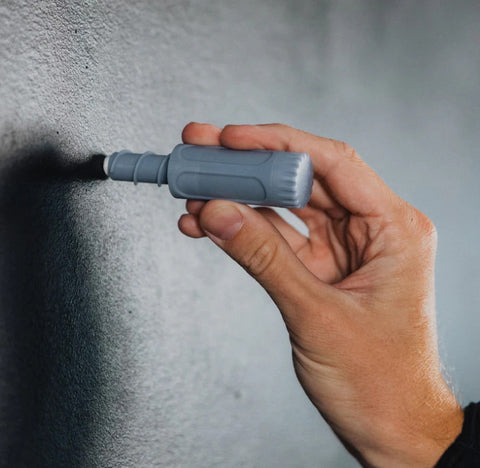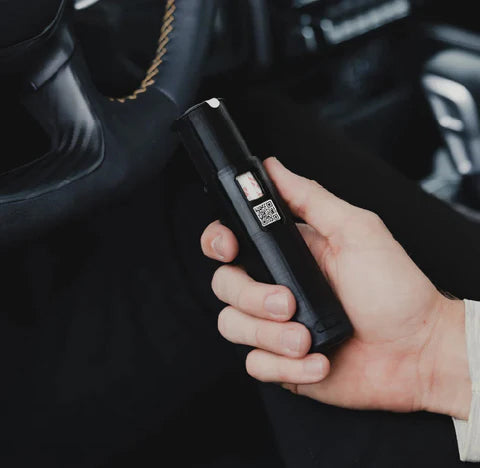The Kids Are Not Alright (How Thirdhand Smoke Affects Your Child’s Development)

Article 25 of the United Nations Universal Charter of Human Rights states that “all individuals, especially children, have the universal right to live in an environment free of nicotine and tobacco-derived carcinogenic matter.”
While it’s not law, it probably should be. We ought to protect our children to the fullest extent of our capabilities, which means limiting their exposure to potentially deadly toxins, such as those found in tobacco smoke.
Is Thirdhand Smoke Less Harmful to Children than Mainstream Smoke?
Thirdhand smoke (THS) is the toxic residue left on surfaces due to tobacco smoke. While you might think that what remains after the smoke has cleared the air (so to speak) is minimal compared to direct exposure, science has proved otherwise.
Recent studies have found that thirdhand smoke can be even more toxic than secondhand smoke over the long term. It settles on surfaces, binds to ozone and nitrous acid particles (common indoor air pollutants), becoming mutagenic, which means it is capable of causing cell mutation within the human body. Thirdhand smoke tends to remain for a long time, increasing in toxicity as time goes on.
This effect is most concerning for children as it could be a precursor to a lifetime of chronic disease or cancer. As most parents would want to do their utmost to protect their children, THS stands as a threat to watch. Fortunately, there are ways to protect against chronic THS exposure, and we’ll get to that a little later on in the article.
The Risks of Smoke Exposure to Normal Childhood Development
Children are most vulnerable to the presence of smoke and smoke residue. Thirdhand smoke lives on surfaces. Kids touch objects, crawl on the floor, put their hands (or things) in their mouths and noses, thus ingesting toxic compounds in myriad ways. Plus, kids breathe faster and have smaller airways, multiplying THS exposure during a time when their immune system hasn’t fully developed.
Unfortunately, getting rid of tobacco residue is not a simple matter. Opening a window and airing out the room only does so much — it does not eliminate the particles and residue that’s already settled on surfaces or absorbed into carpet, curtains, upholstery, or in air ducts and vents.
It’s well-known that children in smoking homes are more prone to chronic diseases like asthma, respiratory infections, ear infections, and frequent nonspecific illnesses. Children in smoking homes are also more likely to become smokers themselves.
Smoke exposure is also one of the most significant overall risk factors for sudden infant death syndrome (SIDS).
Passive smoke residue can cause a child’s airways to swell and become irritated. Children raised in non-smoking homes are less likely to develop frequent lung infections, bronchitis, asthma, croup, meningitis, tonsillitis, leukemia, and other childhood cancers.
Thirdhand smoke can also affect a child’s brain, as it is more vulnerable to any level of toxins at an early age.
How to Protect Your Children from Thirdhand Smoke
The most obvious way to protect your children from smoke-related disease is not to smoke. If you smoke, quit. If it’s challenging for you to do so, get help and support others in your life to do so themselves. The lives and futures of your children depend on it!
As for your indoor environments, don’t assume that interiors are smoke-free. Maintain a strict no-smoking policy at home and in your vehicle. If you smoke or work around those who do, make a habit of removing and laundering your clothes before you hug or have close contact with your child.
In your car, simply opening the window isn’t enough. It might carry the secondhand smoke away, but it does not remove thirdhand smoke residue, which, as we now know, is just as harmful.
Many states have already passed laws making it a crime to smoke inside a car with children under 18. These states include California, New York, New Jersey, Kentucky, Kansas, Indiana, Hawaii, Illinois, and Alabama. Other states have introduced a law with a lower age threshold ranging from eight to 16.
Most European and middle-eastern countries have banned smoking inside vehicles when a child is present, as has Australia, New Zealand, South Africa, and Canada.
Does a Smoking Ban Mean You’ve Eliminated THS Exposure?
Despite your diligence and commitment to eliminating THS from your child’s life, there may be lurking threats you have not considered.
Used cars and rental vehicles, for example, are among the biggest culprits. Dealers will do their best to mask the smell of smoke, but THS settles in fabric and becomes trapped in air vents, and continues to circulate inside the car every time you turn on the fan. Children riding in these vehicles face continuous exposure to thirdhand smoke residue and all the toxic compounds contained therein.
While many used car dealers — including AutoTrader — now classify vehicles as non-smoking, you won’t know for sure unless you test it. Fortunately, there is now a simple, non-invasive handheld test to check for THS residue. Knowsmoke is your secret weapon against THS and a way to ensure your children’s safety. Order your Knowsmoke kit today!

